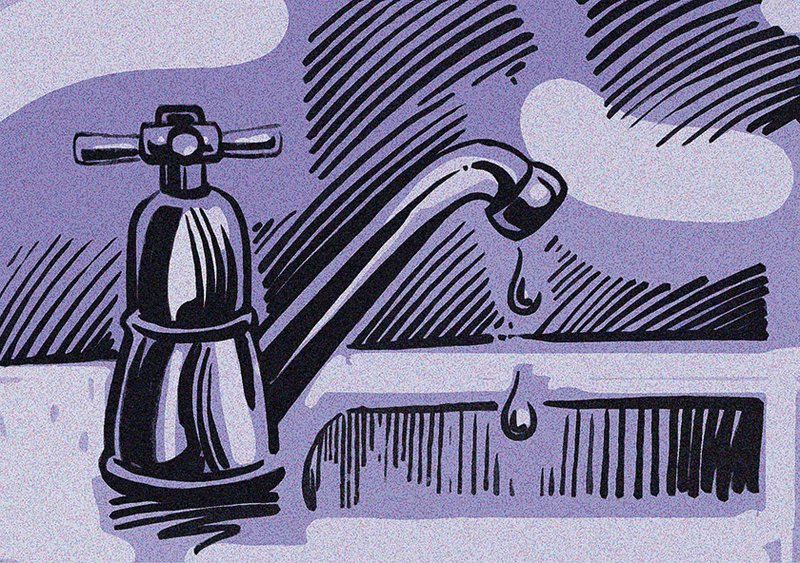I worry about mold and mildew accumulating in my home. What are some ways I can work to keep moisture-related problems at bay?
"The number one cause of homeowner insurance claims is from weather-related damage," says Tim Hennelly, the owner of Casa Buena Home Inspections in Little Rock. "Water damage, such as from leaking pipes or plumbing fixtures, is the second leading cause of homeowner insurance claims."
Moisture drips and humidity problems can lead to the growth of mold and mildew. That, in turn, can trigger various health problems -- such as asthma, allergies, and other respiratory problems -- for a home's residents. As for the house itself, that same moisture and humidity can also cause costly structural damage, including rot in its building materials and premature failure of finishes and paints.
"Uncontrolled water presence in a home should be addressed immediately," Hennelly says, adding that repairing leaks quickly will reduce the chance of structural damage or mold or mildew developing.
But, he adds, water entry from roofing deficiencies or plumbing leaks is not always readily evident.
The following areas are common trouble spots where moisture issues often appear.
• Leaky roof -- A water stain on the ceiling or a damp attic is often a sign of a leaking roof. If that's the case, a roofing contractor should be hired to find the problem area and repair it.
• Dripping faucet -- A shower, toilet, or sink that is constantly dripping should be addressed as soon as possible. Homeowners who feel comfortable doing so can fix it themselves. Or call a plumber.
Building materials such as drywall and lumber that remain wet long enough are sure to develop some rot and fungal growth, which can also develop on those same materials if enough moisture vapor is present in the air in a place such as in a wet crawlspace or poorly ventilated attic, Hennelly says.
And if heat and air equipment is located in a wet crawlspace, and fungal growth is present, there is a good chance that mold spores are being pulled into the house ventilation system, he says.
The most practical way to reduce moisture presence in a crawlspace is to have proper drainage around the house, a good ventilation system and a vapor barrier (plastic sheeting) covering the soil, Hennelly suggests, adding that a radiant barrier is something used in an attic to reflect heat and is not the same as a vapor barrier used in a crawlspace.
Fungal presence in a home should not be ignored. On most finish surfaces it can be cleaned, but due to its porous nature, drywall with a fungal presence typically needs to be replaced.
Neglected for too long, leaks that have led to substantial mold growth should be handled by a mold-remediation specialist or a contractor experienced in dealing with moisture-related damage.
• Excessive humidity inside the house -- The preferred indoor humidity level range is between between 30 and 50 percent but some regular daily activities such as cooking, drying clothes, and showering can increase the interior humidity levels which offer a source for mildew and mold to develop.
"In some cases, an improperly-sized air conditioning system can lead to excessive humidity in a house," he says.
There are several steps that can be taken to maintain proper humidity levels. They include sealing and caulking air leaks in the attic and around doors and windows; installing and using ventilation fans in the bathrooms and kitchen; checking to make certain all dryer, bathroom, and kitchen fans are vented directly outside; and ensuring the clothes dryer's ventilation hose is properly attached and cleaned regularly.
"The best way to reduce moisture vapor in a bathroom is to use a ventilation system, either with a vent fan or by opening the window when showering," Hennelly suggests.
A home's air conditioning system is key to controlling humidity levels during summer. As such, the system should be inspected and cleaned annually by a qualified professional.
• Keep an eye open for problems -- from the top of the home to the bottom. That includes inspecting the exterior gutters for any possible leaks and insuring that the home's foundation is graded properly as well as installing a vapor barrier in homes that feature a crawlspace underneath to reduce moisture.
-- Linda S. Haymes
Do you have a decorating or remodeling question? We'll get you an answer from an authority. Send your question to Linda S. Haymes, Arkansas Democrat-Gazette, P.O. Box 2221, Little Rock, Ark., 72203 or email:
HomeStyle on 04/23/2016

